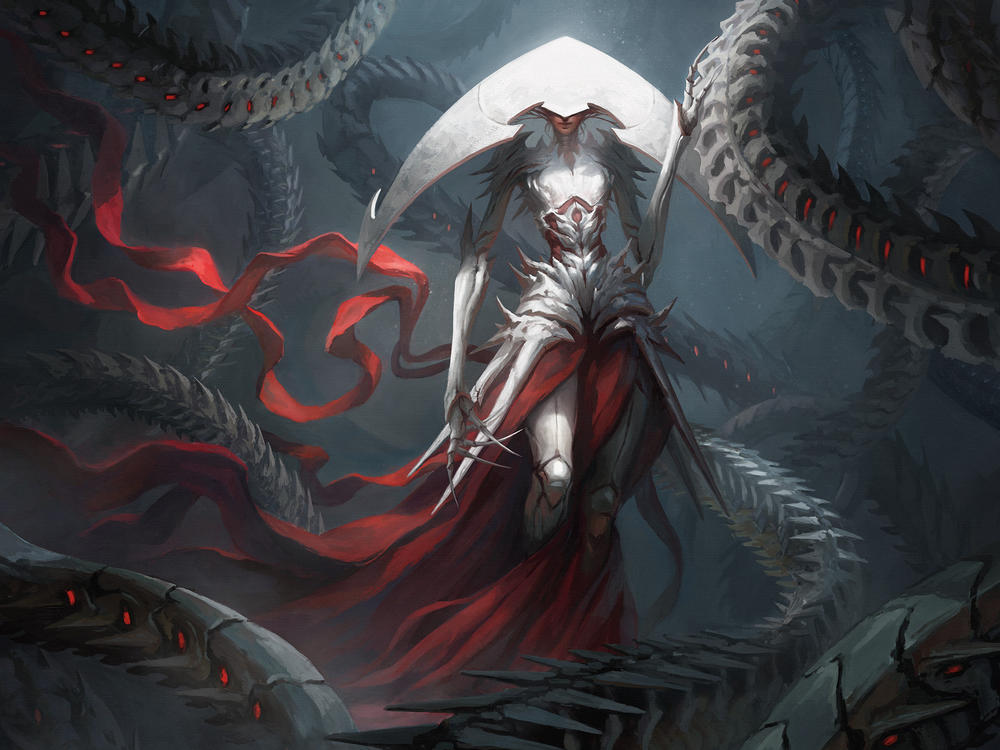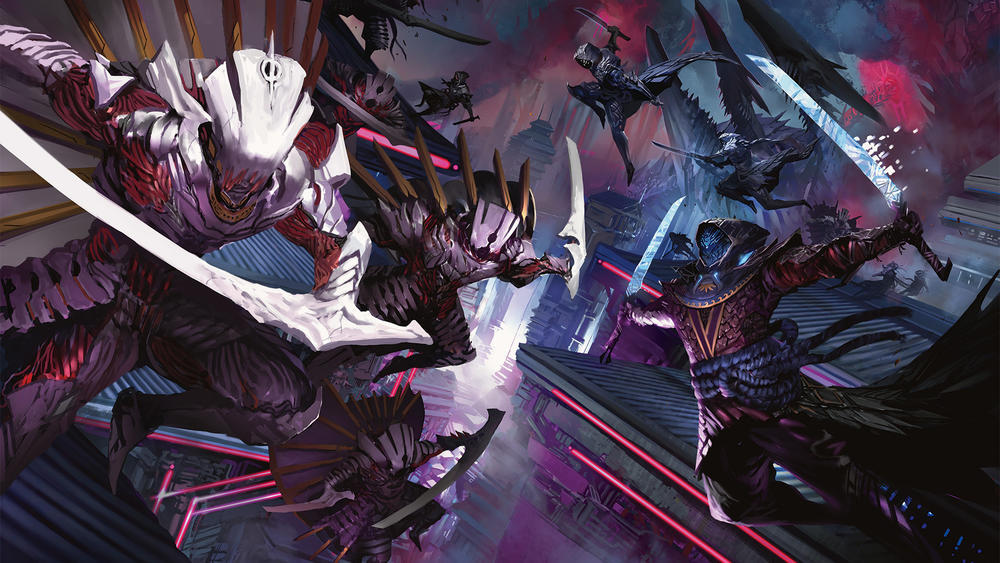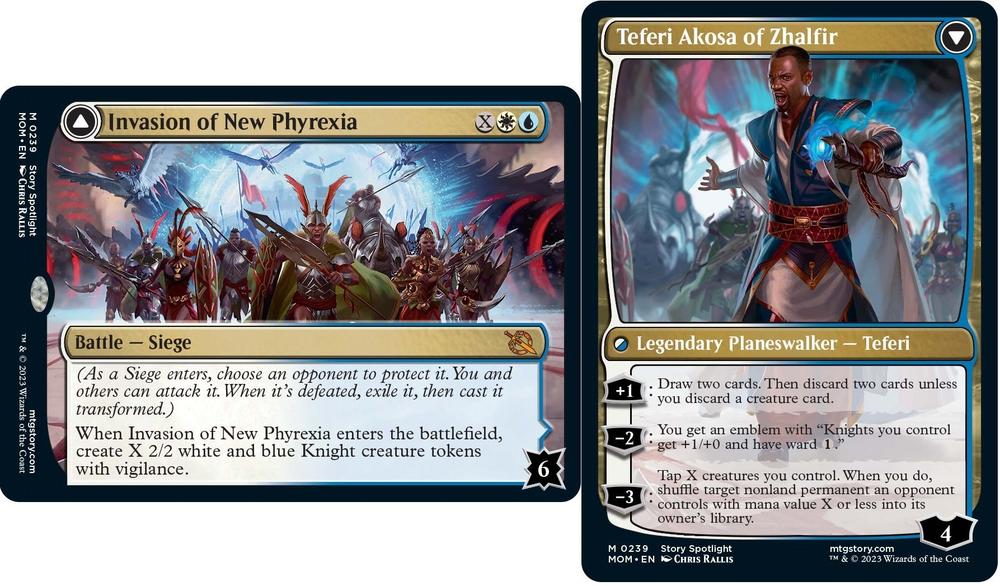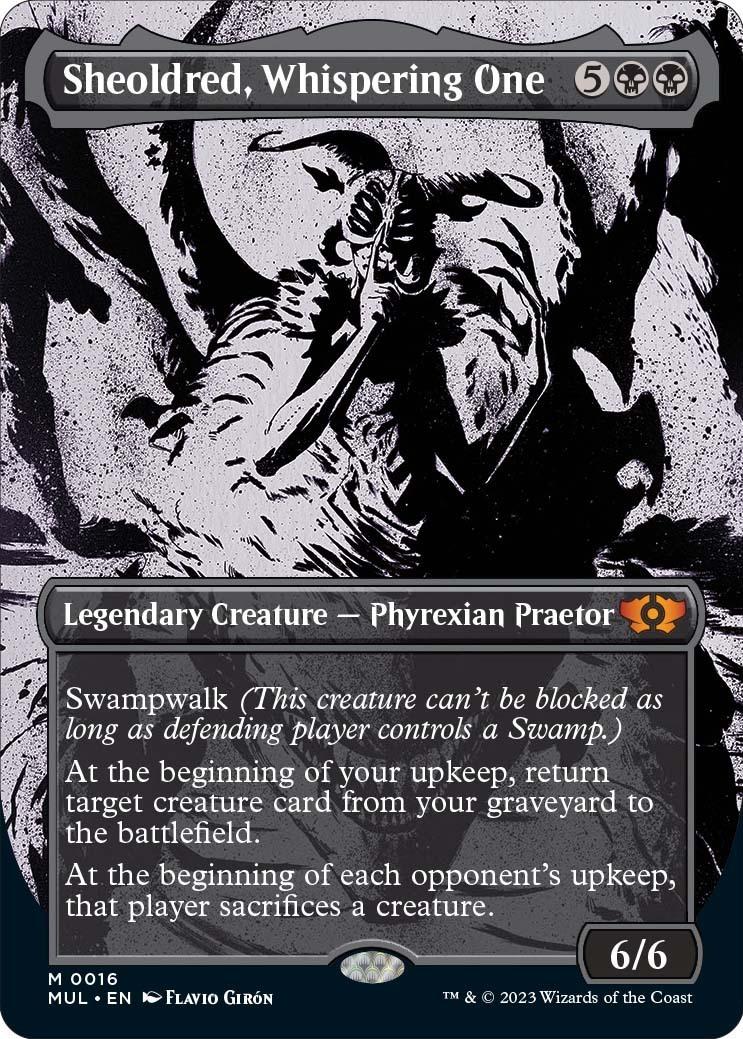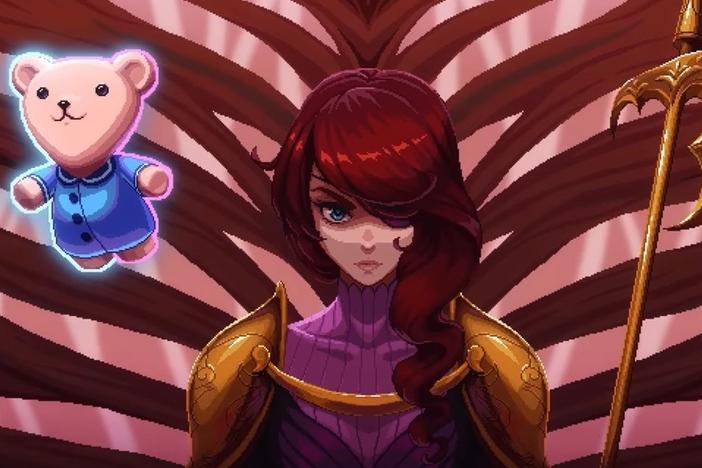Section Branding
Header Content
'March of the Machine' early review: Mom invades Magic: The Gathering's multiverse
Primary Content
Magic: The Gathering has had plenty of big bads, but Phyrexia's Elesh Norn wanted to be the biggest and baddest yet.
The self-appointed "Mother of Machines" (imagine a cross between the Borg Queen and the Pope) literally broke the multiverse. Along with recurring supervillains with sinister-sounding names like Sheoldred, Jin-Gitaxias, and Vorinclex, she led her legions of flesh-and-metal horrors to invade self-contained worlds from across the game's 30-year history.
While Magic's newest release, March of the Machine, brings a climactic finish to a long, interconnected storyline, it also innovates with its mechanics. I got the opportunity play it early through Magic: The Gathering's digital implementation, Arena. I even put in the hours after a freak cucumber sandwich accident sent me to the emergency room, and then typed this article with my right index finger bandaged and immobile — all for your benefit, dear reader.
An old game gets a new trick
Since its inception in 1993, Magic cards existed within well-defined types: creature, land, artifact, instant, and sorcery. "Planeswalker" and "Tribal" joined this esteemed number in 2007 (though the latter isn't a distinct category, but rather a largely-defunct experiment).
TCGs have to evolve to keep you hooked on new cards, of course, but March of the Machine takes one of the game's biggest swings yet. It introduces a new card type entirely: battles. While it's too soon to assess the impact they'll have on formats like Pioneer or even Commander, I can tell you that they add intriguing dimensions to draft and sealed gameplay.
Wizards of the Coast nailed the flavor, here. Battle cards represent Phyrexia's invasion of familiar planes like Dominaria, Innistrad, and Ravnica — but also little-known settings like Xerex, Pyrulea, and Ergamon. Each battle gives you an advantage when you initially play it — but the really weird thing happens next. You hand the card to an opponent to "protect," with promised rewards should you defeat it.
In this sense, battles show off Magic at its most intricate. Your opponent suddenly has to decide whether they'll hang back to defend these cards, or let you claim them without much resistance. Each battle essentially has its own "life total" (like a Planeswalker): attack and damage it enough, and it will flip, transformed into a new card on your side of the table.
Spoiler alert: this is usually worth your time. Some battles have devastating back-faces: a literal God, the time-traveling hero Teferi or, a vampire grandma (an all-star in my games)! But I also admire the crafty psychology behind their design. While your opponent might really feel besieged and focus too much on defense, they can give their owners tunnel-vision. Attacking them doesn't actually hurt your opponent's life — it's entirely possible to win the battle, but lose the war.
Praetors and their legendary foes
March of the Machine also features some of the Magic's most iconic characters — a cycle of Phyrexia's mighty Praetors, and the heroes and villains fighting against them (often, together on one teamed-up card). Packs include one reprint from a curated list of legendary creatures, showcased in unique card frames. Like the "Retro Artifacts" of Brothers War or the "Mystical Archive" of Strixhaven, I appreciate how this bonus sheet supplements the set's archetypes and deepens its replayability.
Let's pause to consider Praetors in particular: I had the good fortune to draft a deck with the new "Sheoldred," and another with the reprinted "Sheoldred, Whispering One," from 2011's New Phyrexia. Both were hard to beat, but the highlight of my stream came when I used "Realmbreaker," the multiverse-spanning tree that enabled the Phyrexian invasion, to call up "Sheoldred" and snatch victory from the jaws of defeat.
Speaking of Phyrexians, many of their cards also "incubate" artifact tokens that flip into creatures for two colorless mana. They also transform at instant-speed, so keep that in mind before going to attack phases! The keyword echoes the zombie armies from another invasion-focused climatic set: War of the Spark. But while that format forced you to amass one token that was vulnerable to removal, incubate lets you go wide. One of my draft decks exploited these tokens with Phyrexian tribal synergies, which shine at uncommon.
In sum, I'm optimistic for March of the Machine's longevity (and excited to feature it in a cube I'm designing). While the set continues the worrying trend of overpowering creatures, its removal seems abundant enough to keep many of its worst offenders in check. I also think the transform cards (from battles to Phyrexians) perfectly match the over-the-top invasion theme. But I still have to ask: where can Magic's 30-year-old story go after such a ludicrous escalation?
Tips for prerelease
Game stores across the world host prerelease events this weekend — the first opportunity for the public to compete in draft and sealed tournaments for March of the Machine. Here's my advice, based on numerous drafts:
- Bounce is better than you think. "Ephara's Dispersal" deserves special mention, since it can often kill an incubate token for one mana, and clear the way to win a battle.
- Convoke is powerful, but lags without early creatures. I thought I had a great sealed pool with four on-color rares and a convoke package, but I struggled when I didn't hit "Ral's Reinforcements" on turn two.
- Big creatures are good. Watch for the landcyclers particularly. "Alabaster Host Intercessor" is bonkers as a common 6-drop "Banisher Priest," but "Timberland Ancient" and "Gloomfang Mauler" have also impressed (plus, you can reanimate them!)
- Don't be afraid to run 18 lands. Limited players typically stick to 17 lands for their 40-card-minimum decks, but the aforementioned giant creatures, transform cards, and costly (but great) removal spells like "Merciless Repurposing" thrive on extra mana.
- Watch for equipment, particularly "Kor Halberd." It's the vigilance that really sells the "Halberd," since you'll want blockers to stop opponents from flipping their battles.
- Bonus tip: practice basic food prep safety. Look, you may think you can call a reporter about a radio piece and slice cucumbers for your wife's birthday lunch simultaneously, but always wear that special glove that comes with the mandoline slicer. You don't want to cut your fingertip off and end up in the emergency room all day, delaying your Early Access plans and the birthday promises you tried so hard to fulfill. Take it from me: cool as the bandages might look on Twitch, it's not worth it!
Copyright 2023 NPR. To see more, visit https://www.npr.org.
Bottom Content

